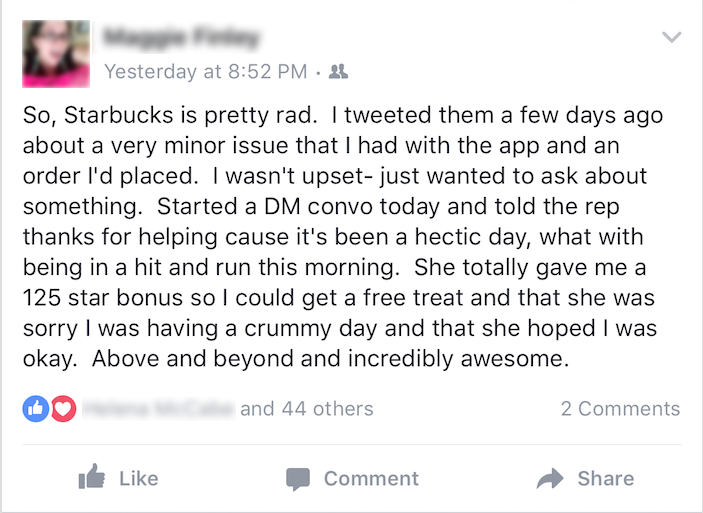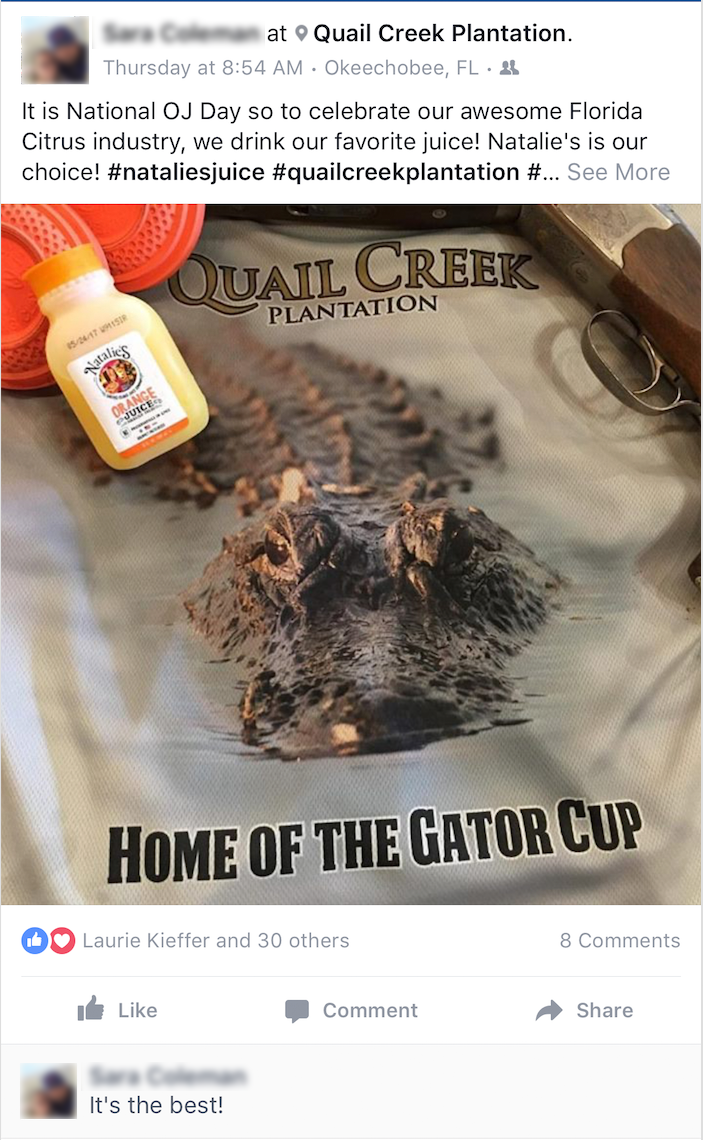Word of mouth has been around as long as language and business have been intertwined. No matter what era, and especially before advertising was a formal activity, people relied on other people to determine what to try.
Why?
Because, when you know someone well, you can trust their opinion on something you’re unfamiliar with, at least to a reasonable extent.
Hence, word of mouth was naturally born from that human need for a trusty review of the unknown.
Since ancient times, however, the landscape on which these interactions have occurred has shifted drastically.
Join me on a journey through...
and finally...
WOMM Definitions Through Time
The original, 1970’s, pre-digital era definition of word of mouth marketing (WOMM) is simply the occurrence of when a satisfied customer (or soon-to-be customer) gives the brand an oral or written recommendation.
This used to consist of hosting product-focused teleconferences, featuring a client review in a catalog, flyer, TV or radio ad, or any other outbound form of marketing that used to be the standard.
The tipping point between old age and new age WOMM is the genesis of the internet.
Once nearly every business launched a website, social media exploded, and the internet inevitably intertwined with our daily lives, WOMM transformed into a whole new beast. Now, brand stories, good and bad alike, spread like wildfire online.
A classic example of successful (and modern) WOMM is Apple’s new product launches: first, they “leak” information about a new product coming soon to create initial excitement online, then let the buzz build, and finally, the company does a grand reveal in the form of an entire event - stage, audience, and all.
You bet that people scramble to attend the official announcement event; Apple successfully gets fans riled up and determined to snag the new product before the rest of their peers. Then, they go tell their friends all about the great new features, scoring Apple a win - and possibly new customers.
The Difference Between WOMM and WOM
Word of mouth marketing (WOMM), as defined above, is quite different from organic word of mouth (WOM).
The key difference is in the source.
WOMM comes from within the company and is an intentional marketing strategy that is launched with the goal of increasing sales, while WOM is a naturally-occurring phenomenon where a consumer voluntarily sings praise of a brand, typically on social media or in conversation, and the company may benefit without ever having lifted a finger on the matter.
Of course, the WOM is a result of an outstanding product, service, or company in general, but the spreading viral message is organic and not planned whatsoever.
This could backfire, however, and consumers may choose to take to the internet to bash a company they despise - which also cannot be controlled, unfortunately.
Let’s take a peek at some examples of WOM as seen on Facebook.
Chances are, you already have seen these kinds of posts from friends, but because of the casual nature of the whole ordeal, may not have realized that WOM is already all around you, all the time.
Starbucks

This user had such a great customer experience with Starbucks, they felt the need to write a whole paragraph on Facebook. Starbucks is a huge company, but every organic endorsement is still a win.
Netflix

Popular culture helps dictate what’s cool or not, and Netflix is one of the modern hubs of new, cool films and shows that spark conversations among friends.
This gut feeling that a consumer gets when watching a trendy show is something along the lines of, “this is great, and I want to share it with friends so that when they decide it’s great too, it reflects positively on my taste in film.”
Hence, a status update is born.
Facebook makes this infinitely more shareable with its status options: users can simply add a “watching Netflix” activity to their post, spreading exposure further for the company.
Natalie's Orange Juice and Quail Creek Plantation

Hometown - or home state - pride is enough to get people to advocate for a brand. Consider this example, where a Facebook user from Florida praises a local brand of orange juice in light of a social “holiday.”
She benefits from sharing her Florida pride with her friends; Natalie’s Orange Juice and Quail Creek Plantation get some free marketing. Everybody’s happy.
How Social Media Has Transformed WOMM and WOM
On the organic WOM side of the matter, social media is a like a gift from the gods, hand-wrapped and delivered to brands’ doorsteps.
Never before has there been a time where a person can post a status, asking for help deciding on a product or brand for a circumstance, and his friends flock from miles away just to throw in their input - and name-drop all their favorite brands.
That’s free marketing!
It doesn’t get much better than that, beside the fact that all your brand has to do to earn it is stay true to your values and mission while delivering a great product or service.
That’s right, you just need to build the best version of your brand that you possibly can, and with enough exposure to the market, people may start to advocate for you, free of charge.
That’s why so many brands are highly active on social media channels - they know they’ll find their passionate fans, fuel their fire, and be able to reap the benefits of the positive public exposure - all for free.
The ROI of WOMM
Is WOMM worth the time and money?
The short answer is yes.
The long answer delves into the ROI side of the matter.
Let’s point out, first and foremost, that there is a lack of consistent measurement of WOM as it happens because it’s quite abstract and has so many variables, but the increase in sales is a clear indicator that WOMM is a smart move.
The Word of Mouth Marketing Association (WOMMA) conducted a study a couple years back that finally sheds some light on how much return on investment (ROI) you truly receive from launching a WOM campaign.
As it turns out, WOMM amplifies the impact of paid media by 15%, which makes it a perfect and simple complement to your existing marketing strategy.
It’s interesting to note that both online and offline WOM produce a positive impact; surprisingly, the offline WOM, such as conversations with friends or family, has twice the impact that online WOM, such as posts on social media, has on a brand.
Because WOMM is a guerrilla marketing tactic, it’s the cheapest form of marketing, has a measurable impact and a solid ROI, and is therefore worth the effort.
How to WOMM
Build a good foundation
First of all, WOM only works in your favor if your company is great. I know that you may think it’s great because it’s your baby, but I’m talking in public image and core brand identifier terms.
Is your brand trusted by consumers?
Is your expertise in the industry credible - and proven to be so?
How well are your corporate social responsibility (CSR) efforts viewed by the public?
Are customers generally satisfied, and better yet - highly satisfied?
These are all things that need to be true - and backed by proof - in order for your brand to successfully launch a WOMM strategy.
Craft the right message
It may seem illogical, but in order to truly have a successful WOMM strategy, you need to work backwards.
What is it that you want consumers to say about your brand as a result of the campaign?
What is the message that you want to exponentially spread and pass through consumers’ lips?
Determine the outcome, then craft a compelling message that will have the desired result.
Think through all potential outcomes and opportunities for the message to backfire so that you go in with a foolproof strategy that can only be positive when done right.
Research competition
The biggest WOMM fail would be to do something that’s already been done before - especially by a competitor.
Research is paramount.
Find your unique value proposition, identify the differences between your brand and competitors, uncover any weaknesses that you could dominate, and then capitalize on all of the gathered information to craft a WOMM strategy that helps your brand truly stand out from the competition.
Leverage influencers
Influencers are the celebrities of social media.
These insta-famous people have huge followings, their reach and engagement is colossal, and people like them because they’re real and they prove it by interacting authentically with fans and followers.
If your brand is a grain of sand in the Sahara of the Internet, getting an influencer from your industry on board can take your message from reaching a couple hundred to a couple thousand - and maybe even million if you’re lucky.
Many influencers charge for endorsement, but it’s a small fee to pay when your reach increases tenfold and the leads start trickling in.
Define ideal audience
Identify your perfect customers - it’s tempting to cast a wide net and try to reach anyone and everyone with a campaign, but it’s the engaged, intrigued, quality leads that will convert.
That’s why it’s critical to hone in on who you’re targeting, where they are, what they like, which sites they’re most active on, and what triggers them to share something online.
Do something 100% unique
Find your special tactic for promoting your product or service. The more unique and innovative, the more memorable it will be for years to come.
If you’re lucky, you may even end up as a case study in an article filled with great WOMM examples - that’s when you know you hit a home run!
Take it to social media
Even if your WOMM strategy is completely offline, it doesn’t hurt to supplement it with some free social media exposure.
Whether your brand responds actively to happy customers, curious inquiries surrounding the campaign, or creates a unique hashtag to get more participation, it’s a simple way to keep the buzz going.
Another tactic for leveraging social media is to create contests, discounts, or other rewards for interaction - so long as you carefully review the social media’s rules before launch.
Reward or follow up with audience
The final step, though it may seem optional, is unquestionably mandatory: follow up with your followers and fans.
Either reply to their messages and comments with an actual human response from your team, or you could even give out small gifts, such as discounts.
This shows your audience that you care about having them in your community because they are loyal, not because they have money to spend.
Thanking your audience for their support is important because you’re showing appreciation for their participation, which will entice them to come back in the future.
On that note...

Thanks so much for reading!
(See what I did there?)




